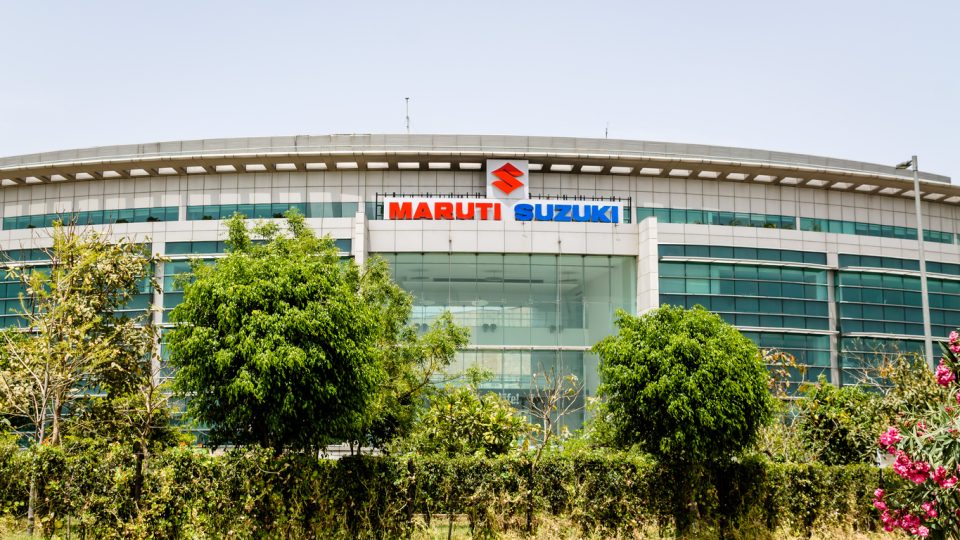
Maruti plays catch-up as Indian middle-class laps up compact SUVs
Every other vehicle purchased today is a compact SUV, dominating the Indian passenger car market; Maruti is hence pushing its Grand Vitara and Brezza models

Maruti Suzuki believes it justifiably owns the passenger vehicle market in India. However, a market share that has been steadily declining over the past five years is evidence enough that it has yet to make any meaningful efforts to own that field.
The carmaker commanded a share of 51.2 per cent of the passenger vehicle market in FY19, allowing it to dominate half of the overall market. Since then, the company has seen a precipitous fall in its market share, which is now 41.5 per cent (year to date).
So, what went wrong with Maruti?
Even Daihatsu, a leading Japanese manufacturer of small cars, decided against entering the Indian market because of the near-dominance of Maruti Suzuki in the segment. For a long time, Maruti Suzuki, India’s largest car manufacturer, kept rolling out efficient small cars at prices which other manufacturers could hardly compete with. This was one of the significant reasons customers bought a Maruti Suzuki car.
Also read: Air India-Vistara merger: Singapore Airlines gets bigger India play
The little car models from Maruti Suzuki, the 800 and the Alto 800, caught the entire nation’s interest to such an extent that filmmakers developed movies depicting the struggle of the middle class to purchase their first Maruti vehicle.
One of these films, Do Dooni Chaar, tells the story of a high school teacher who cannot get enough money to make the initial payment to purchase his dream car, an Alto 800. However, his family believes that this purchase will allow them to improve their standard of living. Yesteryear heartthrobs Rishi Kapoor and his wife Neetu Singh played the couple’s role.
Subtle shift to compact SUVs
The dominance of Maruti small cars in the Indian passenger car market was so great, analysts following the company point out, the automaker did not anticipate the subtle shift in preference among Indian customers — armed with rising income levels and eager to upgrade their lifestyle — for compact SUVs. As a result, the company missed out on a significant opportunity.
The more astute ones, like French carmaker Renault, realised that they couldn’t compete with Maruti in the small vehicle market, and they introduced compact SUVs like Duster, which became a smashing success and created a new niche in the market.
This pushed other automobile manufacturers to launch their versions of compact SUVs. As a result, every other vehicle purchased today is a compact SUV, dominating the Indian passenger car market. This market is anticipated to expand at a compound annual growth rate (CAGR) of 9 per cent over the next seven years, reaching about 2.16 million units by 2028.
Ideal for Indian roads
SUVs have a significantly higher ground clearance than other models, which is one of the primary reasons for their phenomenal success in the Indian market. Because of the state of the roads in India, this factor has emerged as a significant reason in recent years when picking out automobile models.
In addition, the SUVs have superior sporty engines, a more refined ride quality, and large trunk capacity, which are necessities now that more people in India are travelling throughout the country by road.
Also read: Obituary: Vikram Kirloskar, who brought Toyota back to India
Maruti Suzuki’s compact SUV Brezza made some inroads into the market but did not achieve the anticipated success since it lacked a powerful automatic version. The most recent edition, however, has addressed this deficiency.
In addition, due to the collaboration between Maruti Suzuki and Toyota Kirloskar Motors, the automaker has been able to release an updated model of the hybrid SUV Grand Vitara, which is also marketed under the names Toyota Urban Cruiser Neo and Hyryder.
Maruti Suzuki now has a significant book order of 4.12 lakh units, of which 1.3 lakh units are for SUVs such as the Grand Vitara and Brezza. The carmaker hopes to capitalise on this trend and anticipates that it will be able to reclaim a market share of more than 50 per cent by shifting its focus from the hatchback market to the SUV market.
This will result in an increase in annual capacity from the current 2.5 million units to 3.5 million units, an expansion of its facility in Manesar by one lakh units, and the utilisation of Toyota’s plant in Bengaluru for an additional 1-2 lakh units.
Backlog issues
But there are newer problems for the carmaker even as it tries to edge out competitors to win back its market share. Its inability to clear the backlog, which appears to be growing virtually daily, could drive away potential customers. Today, customers are less likely to be loyal to a particular brand and want their automobile models delivered to their driveway within a few days of making a booking.
Its strategy, which allowed it to build market share with smaller and extremely affordable cars rapidly, may not work anymore. It must disrupt the market again if it wants to sustain and grow its claim. This time, it could be more challenging.


